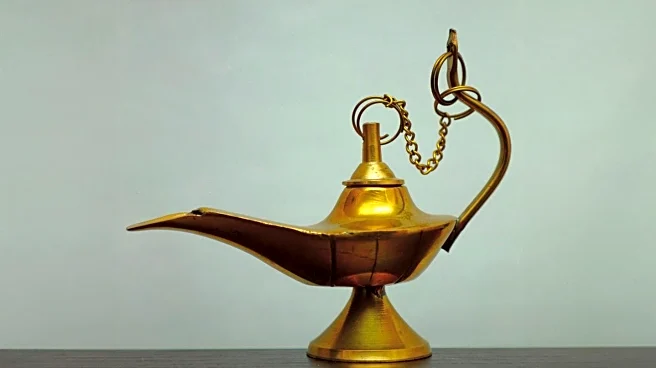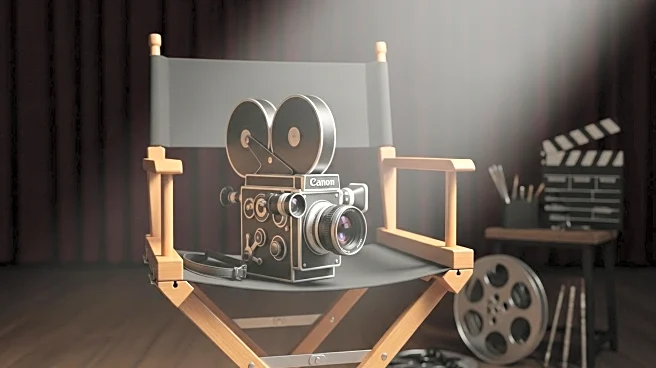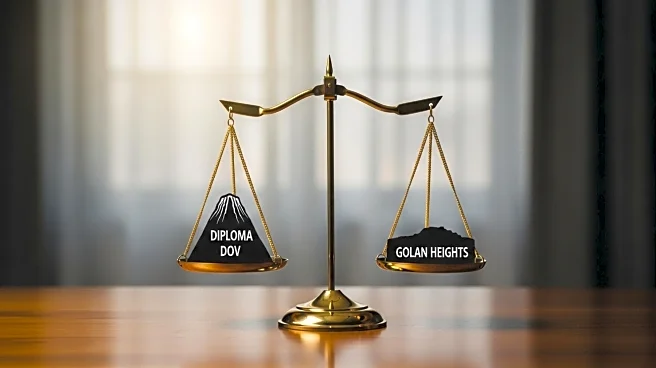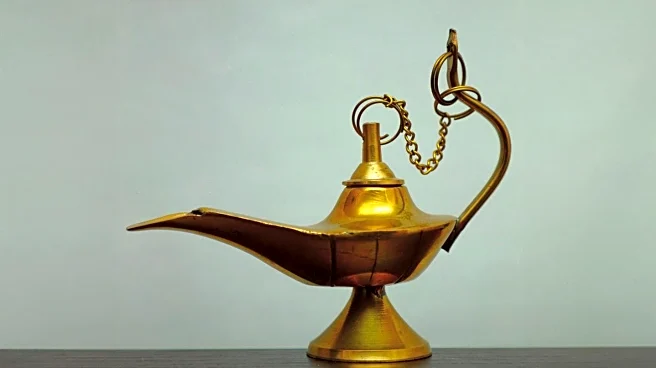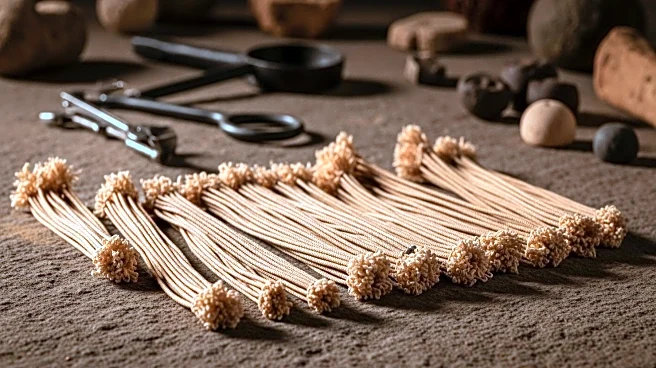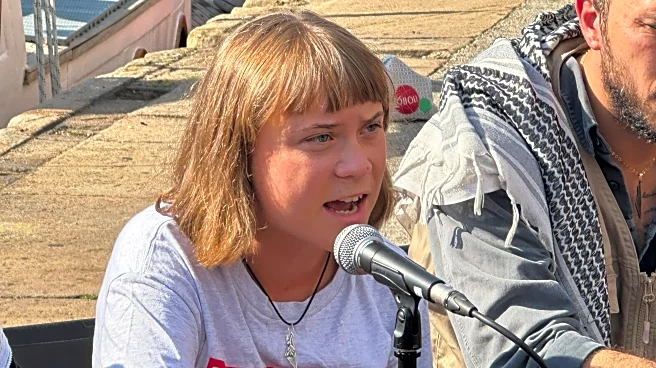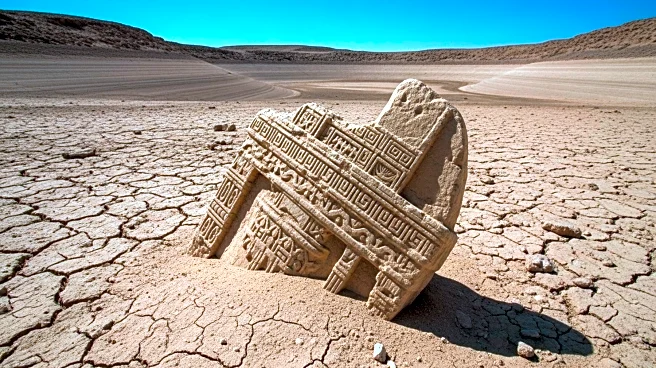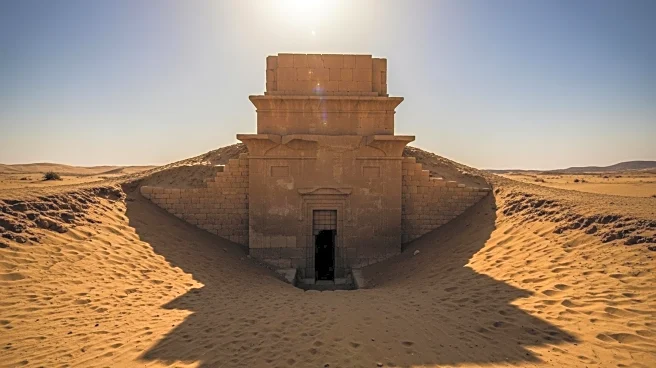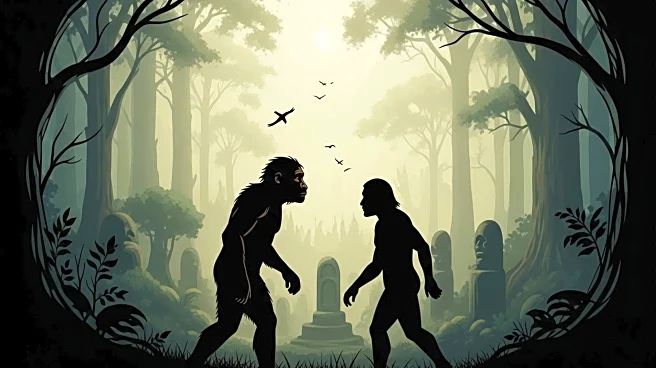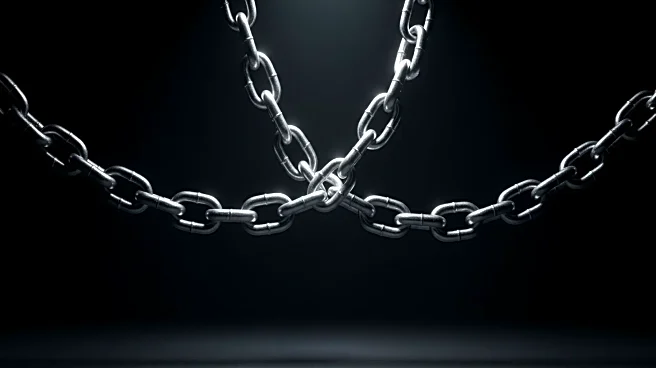What is the story about?
What's Happening?
A significant archaeological discovery has been made in Yehud, Israel, where researchers from the Israel Antiquities Authority (IAA) uncovered some of the oldest lamp wicks in history. These wicks, dating back to the Intermediate Bronze Age (c. 2500–2000 BCE), were found inside clay lamps during an excavation for a new neighborhood development. The discovery is remarkable due to the preservation of organic materials in the moist Mediterranean climate, which typically leads to decomposition. The wicks were found in ancient tombs alongside other burial offerings such as pottery, animal bones, weapons, and jewelry. The lamps showed traces of soot, indicating they were used during burial ceremonies.
Why It's Important?
This discovery sheds light on ancient practices and the use of fire in burial rituals, which was common across the ancient Near East. The preservation of the wicks, which underwent a rare fossilization process, provides insight into the economic practices of the time, highlighting the recycling of precious materials like linen fabric. The find contributes to the understanding of the Intermediate Bronze Age population in the Land of Israel, which did not leave written records. The IAA emphasizes the importance of such discoveries in piecing together the historical narrative of the region.
What's Next?
The findings have been published in the IAA’s scholarly journal, Atiqot, Volume 118, allowing for further academic study and analysis. The IAA plans to continue its excavations and research in the area, potentially uncovering more artifacts that could provide additional insights into ancient practices and cultures. The publication of these findings aims to enhance the understanding of historical developments in the region.
Beyond the Headlines
The discovery of these ancient wicks not only highlights the technological innovations of the time but also reflects cultural practices related to burial rituals. The use of fire as a symbol of the human soul in these ceremonies points to the spiritual beliefs of the ancient populations. Additionally, the recycling of materials indicates an early form of sustainable practices, which resonates with modern environmental concerns.
AI Generated Content
Do you find this article useful?
